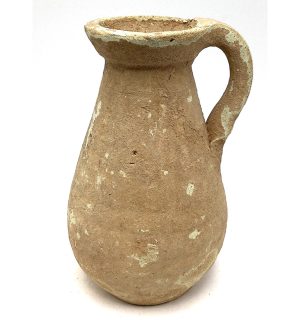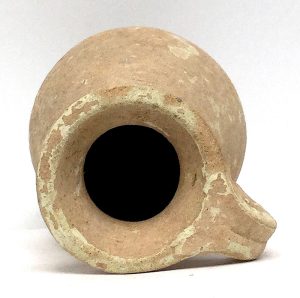Ancient Terracotta Oenochoe (Wine Jug), Roman North Africa, H: 4.5″
Original price was: $275.00.$210.00Current price is: $210.00.H: 4.5” W: 3” D: 2.75” | FREE SHIPPING WITHIN CONTINENTAL U.S. !
Greek style Oenochoe wine jugs were made in Roman North Africa and exported throughout the empire. Potters wheel made unadorned coarse wears like this small vessel with everted rim were made for daily use and for offerings to deities.


